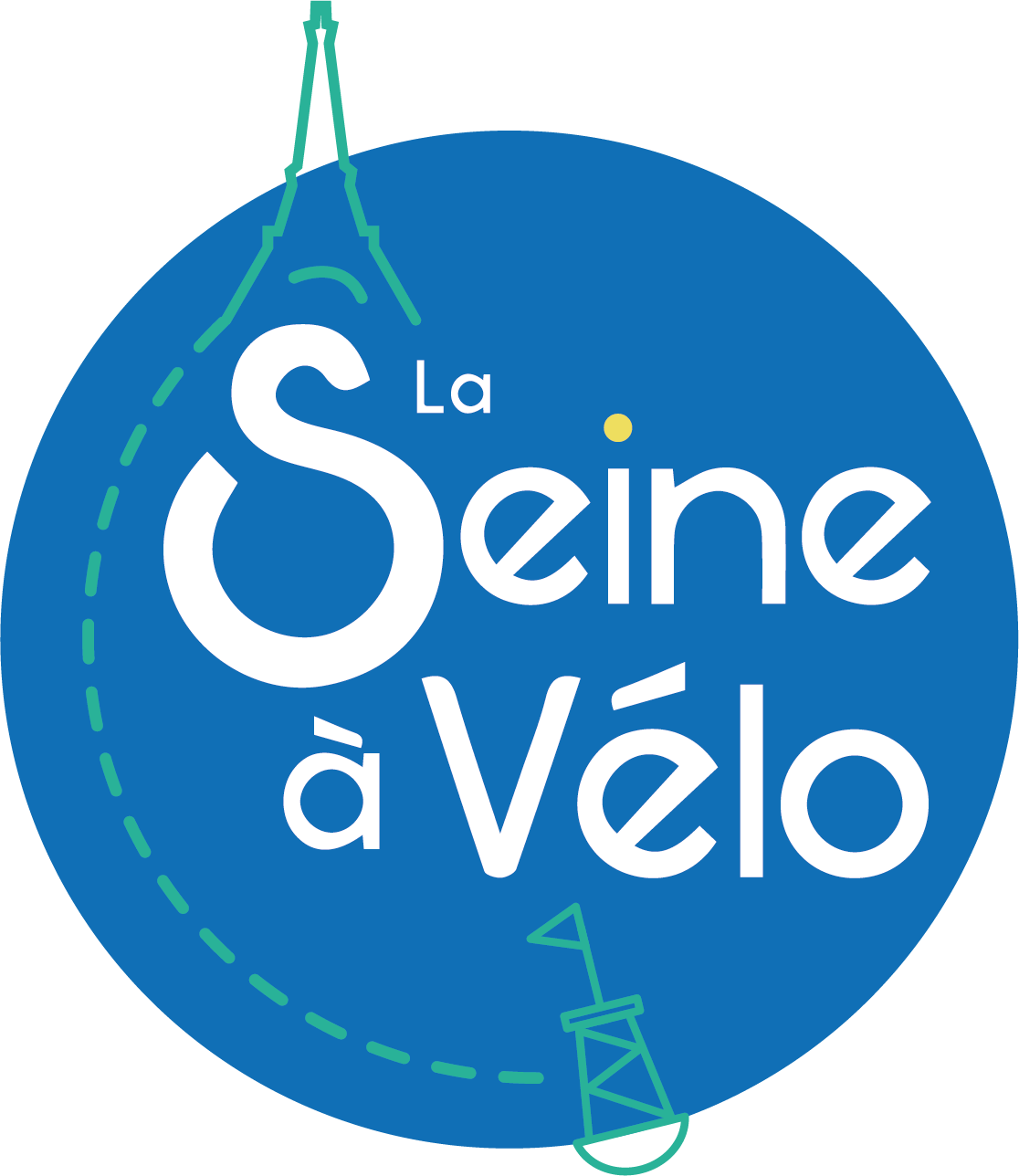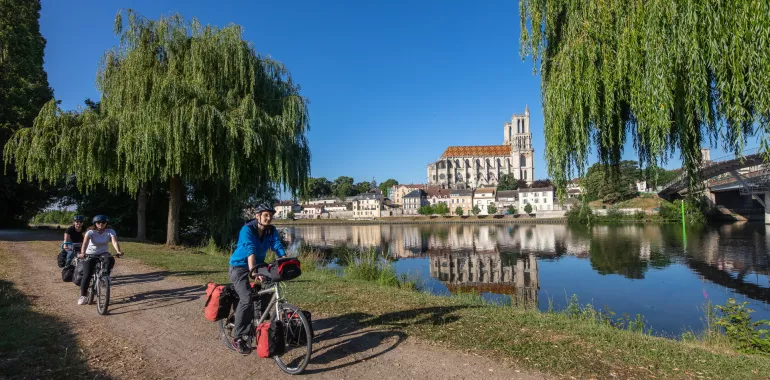26,32 km cycling route from Mantes-la-Jolie to La Roche-Guyon
Elevation of the stage
Waytypes of the stage
Surface of the stage
The route
Note that there are provisional stretches along this stage at time of writing, with short portions on earth or grassy tracks. These portions should soon been adapted for cyclists. Remember to download the GPX tracks to find your way in the meantime.
Once in Mantes-La-Jolie, cross the Seine via the footbridge, accessible to cyclists, to reach the Ile aux Dames. Continue across the bridge to get to Limay and onto the route along the towpath beside the Seine’s north bank. At Follainville-Dennemont, while awaiting the setting up of the cycle path by the Seine, you need to take the D148 road up to Guernes. Take particular care, as there is quite a bit of traffic, particularly at rush hour, and some vehicles travel fast. The route cuts off the next meander, going via Rue de Sandrancourt, bringing you back to the Seine at Port de l’Ilon (for pleasure boats) and then continuing beside former sand-extracting sites at Sandrancourt. A quiet road leads on to Saint-Martin-la-Garenne, then make sure to use the even smaller road (in fact a string of chemins) just above the busier D147 to reach Vétheuil. After that, take care heading west, as you have to share the way with motorized traffic, riding along the D913 to La Roche-Guyon.
RER
- RER A station : Conflans-fin d’Oise, Poissy
Don’t miss
- Musée de l’Hôtel-Dieu at Mantes-la-Jolie: Just a few metres from the collegiate church, the former medieval hospital, or Hôtel-Dieu, now contains the town’s Musée des Beaux-Arts, located on the cultural Route de l’Impressionnisme. It displays the largest collection in Europe of works by Camille Pissarro’s friend, Maximilien Luce. This Post-Impressionist painter focused very much on scenes from around the Seine Valley.
- Vétheuil Church: The village church is a masterpiece of 12th-century architecture, finished off in the Renaissance with the most remarkable of richly-carved façades. Inside, the many statues and religious art objects are very much worth admiring too.
- Maison de Monet at Vétheuil: Claude Monet lived in this house for three years. He painted almost 200 canvases while at Vétheuil, including landscapes featuring the Seine iced over, the village church looking down on the river’s meander here, his flower-filled garden, and more.
- Troglodytic Church of Haute-Isle: The church at Haute-Isle was almost entirely dug out of the chalk cliff here. Just the bell-tower had to be built out of stone! This underground church has been listed on the Inventaire Supplémentaire des Monuments Historiques (or supplementary list of French historic buildings) since 1926. It’s a unique, unmissable site in the Ile-de-France Region!
- The Château de La Roche-Guyon and its kitchen garden: The castle has been entirely rebuilt, enlarged and embellished since the 18th-century, but has more ancient roots, a stairway dug into the cliff leading up to the much older keep. This fort is a startling place to visit, the highpoints being the unbeatable views of the Seine and the kitchen garden. This garden, a re-creation of a fruit and vegetable garden from the 18th century, occupies the large flat area of land between castle and Seine. Experimenting with unusual varieties from the start, it’s now run on organic lines. Produce from the kitchen garden is sold in the château’s shop.


Travellers’ reviews